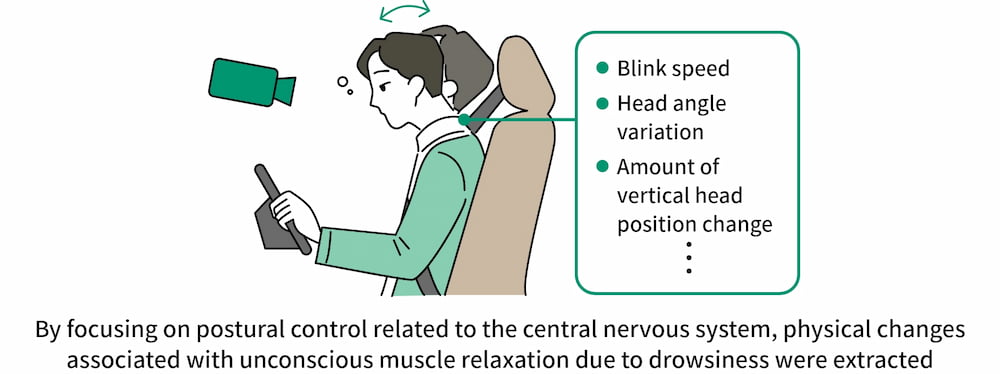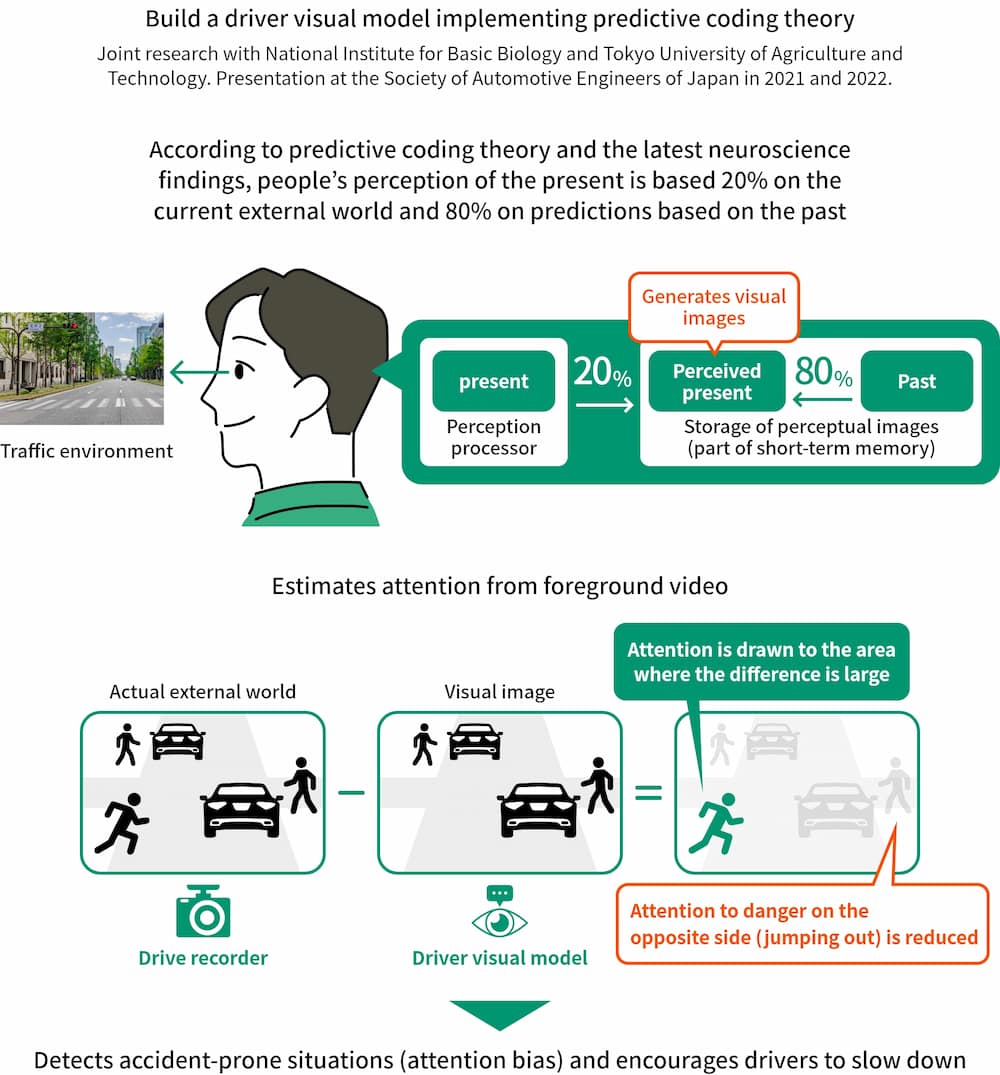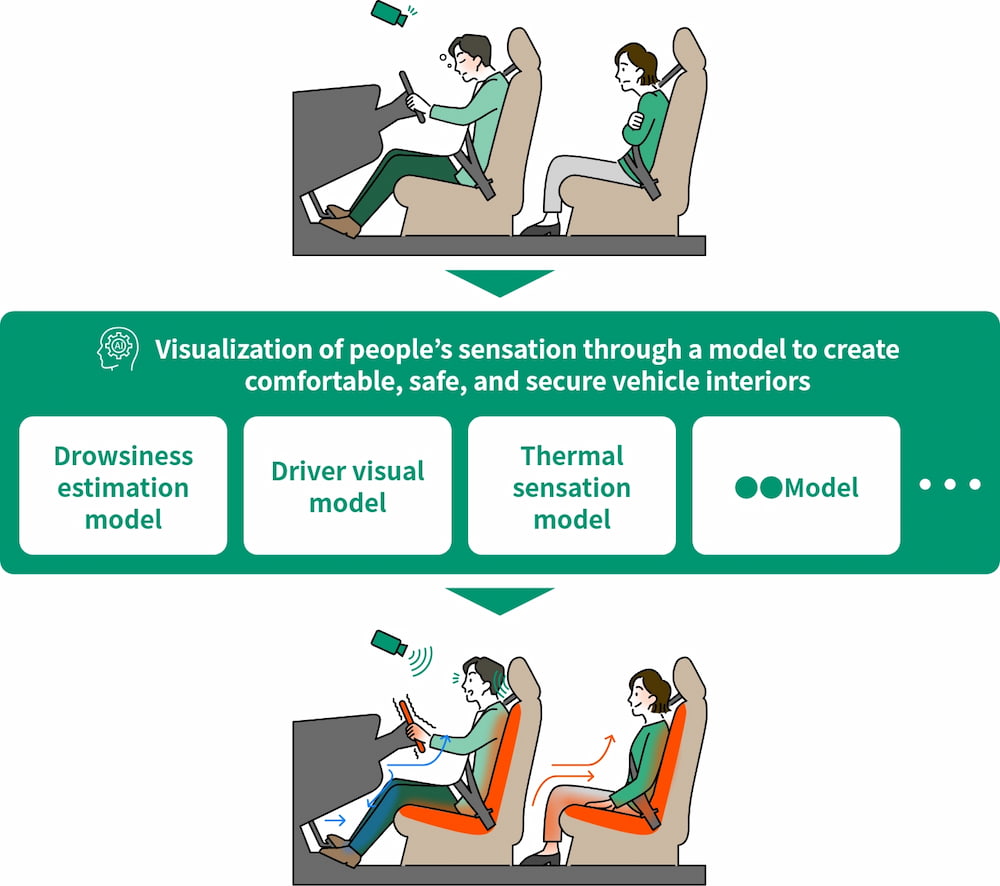
Innovation
Technology for the Future of Cabin UX
(Human Insight Technology)
Applying Panasonic Group’s Expertise with People in the In-Vehicle Field, Contributing to Safe and Secure Driving and Providing Comfortable Vehicle Interiors.
Panasonic Group has been applying its expertise in people/lifestyles to contribute to the in-vehicle field. The following introduces just some of the research we are conducting on people and how it is contributing to safe and secure driving, as well as how it is making the inside of cars (vehicle interiors) more comfortable.
Estimating How Drowsy Drivers Will Be and Linking It to Safe Driver Assist
People will always get drowsy. It cannot be denied that people will become drowsy if they are driving. If there is a technology that detects the driver’s current state and estimates how their drowsiness is developing, it will be possible to encourage the driver to take a break before they become too sleepy, or to make the driver more alert by changing the environment inside the car such as the sound and temperature, leading to safer driving.
We have evolved Panasonic Group’s existing technology for estimating drowsiness based on facial expressions, blinking, and heat radiation, and have developed our own drowsiness estimation model that minimizes errors caused by individual differences.
Specifically, the model estimates drowsiness by understanding and extracting the characteristics (parameters) of when people feel drowsy, such as blink speed, head angle variation, and amount of vertical head position change of drivers, captured by camera, and by observing their changes over time. The goal is to prevent traffic accidents and near-misses by changing the environment inside the car before strong drowsiness sets in.

What Do People Look at When They Drive?
What do drivers look at when they are driving? If this could be clarified more scientifically, we would know when traffic accidents are more likely to occur and what we need to pay attention to.
It is known that only 20% of people’s external world perception is based on the current images coming in through the eyes at any given moment, while the remaining 80% is based on anticipated images generated from memories of the immediate past. These visual images are used to recognize the current external world. So, people’s attention is drawn to points with large differences between the actual external world and the visual image.
Based on predictive coding theory, which can explain this phenomenon, we have developed a model that can detect which image parts people’s attention is drawn to when they are driving a car. By analyzing foreground video recorded by a drive recorder using this model, it is possible to detect where the driver’s attention was focused when a near-miss actually occurred while driving. We are the first company in the world※ to demonstrate this function. We will leverage this in HMI (human-machine interface = a device that provides drivers with information needed for driving), to provide functions to eliminate driver’s attention bias and guide them to safe driving.
- As a driver visual detection function. According to our research.
We will continue to understand human characteristics and develop technologies to create safe driver assistance.

Modeling People’s Sensation of Cold and Warm to Make Each Person Comfortable
Without heating, it can be freezing inside the car in the winter. The engine is a large heat source. Once it warms up, the generated heat can be used as a heater. However, an electric vehicle without an engine must continuously use electricity for heating. This is an important issue that affects driving range. Heat needs to be applied quickly, efficiently, and effectively. One way to achieve this is with a seat heater, which are seats with electrically heated wires inside.
Our seat heater heats people directly and efficiently instead of heating the entire cabin space. This is achieved by modeling people's sense of cold and warm.
When designing seat heaters, we analyze the temperature of the vehicle interior and the seats to simulate how people feel. We have developed a thermal sensation model and created a cabin air conditioning system that allows people to feel warm by applying seat and radiation heaters. This reduces the heating of the entire vehicle interior, minimizing the power consumption of the heating system.
The thermal sensation model represents the relationship between a person’s skin temperature, body temperature regulation, and psychological reactions. This thermal sensation model is combined with a vehicle interior model to simulate heating comfort. In doing so, we model the specifications of the seat heater and the temperature distribution inside the seat when a person is seated, and we review how best to warm people through the simulation.
Because we are a company that is close to people, we will continue to create energy-efficient heating that is comfortable for people of all sizes and sensations.

More Comfortable, Safe, and Secure Travel Time with Panasonic Technology
We will continue helping to create more comfortable vehicle interiors and safe/secure driving by applying Panasonic Group’s technologies that are close to people and their lifestyles, and by developing technologies such as human modeling.


